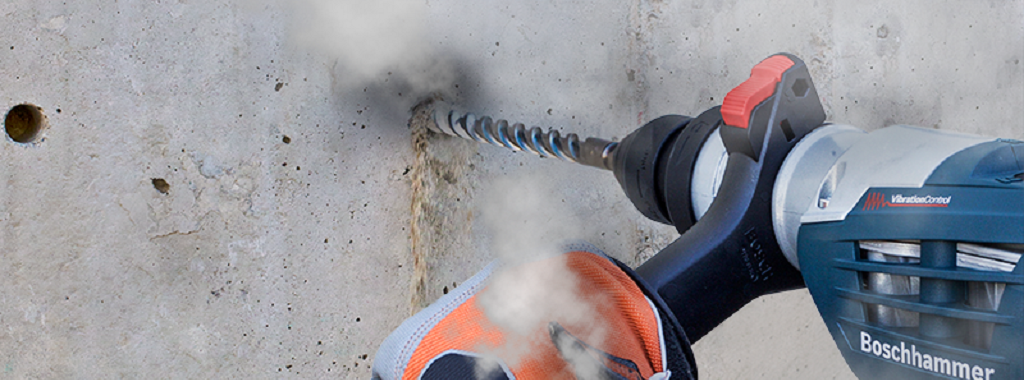In March of 2016, the United States Department of Labor issued new OSHA standards on how crystalline silica dust should be handled in various workplaces including within the construction industry. The changes are intended to limit workers’ exposure to and inhalation of silica dust on the jobsite. These regulations will replace the current standard, which was issued in 1971. Compliance with the new rules will be required on construction jobsites starting September 23, 2017, and will be enforced through OSHA from that time forward.
Crystalline silica is a naturally occurring mineral that is found in sand, sandstone, shale and granite, and since some of these materials can be found on jobsites on their own or as a component of a construction material such as concrete and mortar, changes to how workplaces contain and dispose of silica dust will affect the way our industry operates. Some of the processes performed on a construction jobsite that can expose workers to crystalline silica dust are drilling, grinding and sawing concrete and masonry; jackhammering; and sand blasting. Inhaling crystalline silica can lead to long-term illness and early death. Illnesses caused by inhaling silica dust include silicosis, lung cancer and chronic obstructive pulmonary disease (COPD).
The new OSHA standards do the following:
- Reduce the permissible exposure limit (PEL) for respirable crystalline silica to 50 micrograms per cubic meter of air, averaged over an eight-hour shift. Previous PEL was 250 micrograms per cubic meter of air, averaged over an eight-hour shift.
- Require employers to use engineering controls (such as water or ventilation) to keep worker silica exposure within the PEL; provide respirators when engineering controls cannot adequately limit exposure; limit worker access to high-exposure areas; develop a written exposure-control plan; offer medical exams to highly exposed workers; and train workers on silica risks and how to limit exposure.
- Provide medical exams to monitor highly exposed workers and give them information about their lung health.
- Provide flexibility to help employers – especially small businesses – protect workers from silica exposure.
Beyond that, the OSHA standards offer three methods an employer can use to demonstrate compliance:
- A list of common jobsite activities and the required engineering control method, plus the additional respiratory protection (if needed) to meet the 50 PEL.
- For activities/protection methods not included in the preceding list, the use of credible third-party assessment is allowed to show that the exposure level is < 50 PEL. This includes data from universities, trade associations, etc. that can be used provided they are based on conditions similar to, or more inherently hazardous than, the employer’s current conditions.
- Manufacturers can generate their own data on their workers’ exposure level using an air-monitoring system.
Visit the US Department of Labor’s OSHA website for more in-depth information and useful links.
All these new requirements directly affect contractors onsite, but it’s also important for structural engineers to have an understanding of them. Beyond that, there are some key things that structural engineers should consider when specifying products such as post-installed anchors where the installation process includes drilling concrete, which does generate crystalline silica dust. Back in 2006 when Acceptance Criteria 308 was adopted, it made a lot of changes to how adhesive anchors are tested and qualified, but it also required that the manufacturers’ printed installation instructions (MPII) be published as part of the code report. This tied the published data in the code report to the installation procedures that could be used to achieve those data. And with the adoption of ACI 335.4 in 2015, the requirement for the MPII to be included in the code report continues. Therefore, with MPIIs being a part of the code report, a structural engineer needs to understand the importance of having an installation method that accounts for silica dust generated during the installation process and verify that the MPIIs include an installation process which utilizes a high-efficiency dust-collection system.
To get a better understanding of how these high-efficiency dust-collection systems work, let’s look at the Simpson Strong Tie Speed Clean™ DXS dust extraction system. This system was developed through a partnership with Bosch. Here is a video that clearly explains the system and its method:
So as structural engineers, we should consider what the MPII says when we are specifying a product. Does it have an installation procedure, such as the Simpson Strong-Tie/Bosch DXS, that properly controls the crystalline silica dust generated? Does the code report lock the contractor into a specific brand of vacuum? Some code reports may only allow the use of a specific brand and model of vacuum and drills that can be used, which in some cases could require the purchase of new tools.
The new OSHA standard is very beneficial to installers because it will protect them from potential long-term health hazards. When it comes to anchor installation, the new regulations, along with compliant technologies such as the Speed Clean DXS, will eliminate the blow-brush-blow installation method that creates a lot of harmful airborne crystalline silica dust and is also often a source of installation error. Even though it will take time and effort for contractors and engineers to come to grips with the full ramifications for their projects, the new regulations are a positive development for the construction industry.


